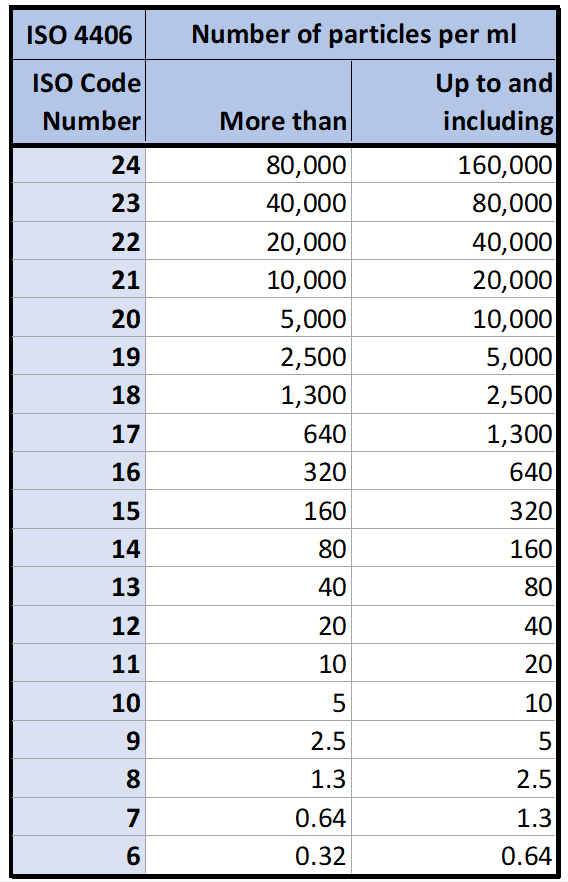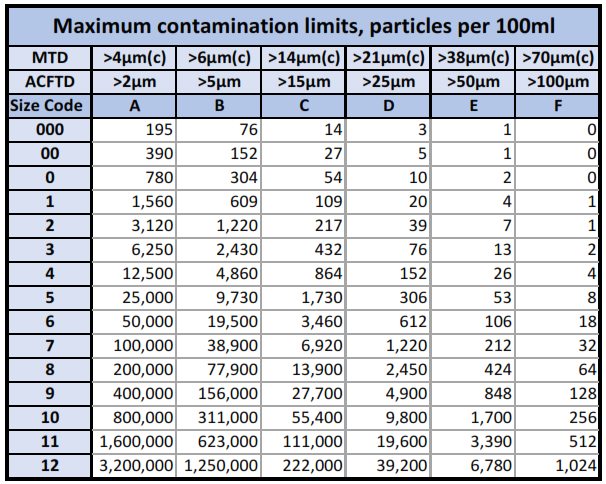ISO 4406, NAS 1638 & SAE AS4059 Cleanliness Codes
There are a number of different cleanliness code standards, we will detail a few of the common ones here.
ISO 4406 is a three part code (e.g. 18/17/13), where the first number encodes the number of particles greater than 4µm in size, the second number refers to particles greater than 6µm, and the third number quantifies particles greater than 14µm (>4/>6/>14)*. The ISO Code numbers themselves are quantified in the below table. It is important to note that a cumulative count is used (i.e. particles >4µm rather than between 4 and 6 µm).

Thus an ISO Code of 15/14/12 means that there are between 160 and 320 particles per ml greater than 4µm, between 80 and 160 particles per ml greater than 6µm and between 20 and 40 particles per ml greater than 14µm.
*An older version of the standard referred to particles >2µm/>5µm/>15µm. The change was due to a different calibration dust standard being used and was also designed to separate the 4-6µm range, as relevant to hydraulic systems with clearances around 5µm.
In NAS 1638 classification the code number refers to a maximum quantity of particles within a specific size class. Most users use a single code number based on the highest particle count in any of the size ranges. This standard is now considered obsolete, however it is still widely used.

SAE AS4059 Rev E Table is technically identical to ISO 11218. The below table refers to cumulative counts, with the different particle size ranges quoted for calibrations to different standard**. Results are presented in the format of A6/B6/C5/D5/E4/F3.
**Instances of particle sizes given as “µm” refer to ACFTD (i.e. Air Cleaner Fine Test Dust) distributions. Instances of particle sizes given as “µm(c)” refer to MTD (i.e. ISO Medium Test Dust) distributions.

